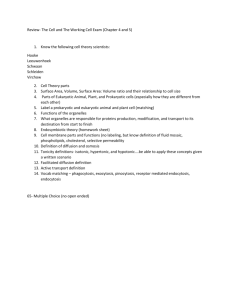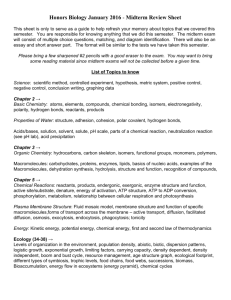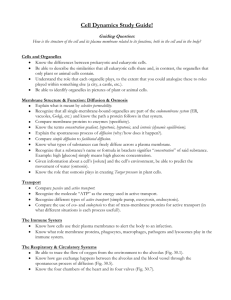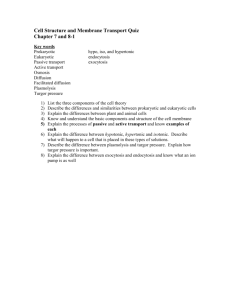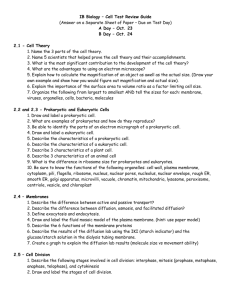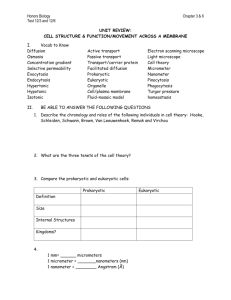2013 Mid-Term Review This sheet is only to serve as a guide to help
advertisement
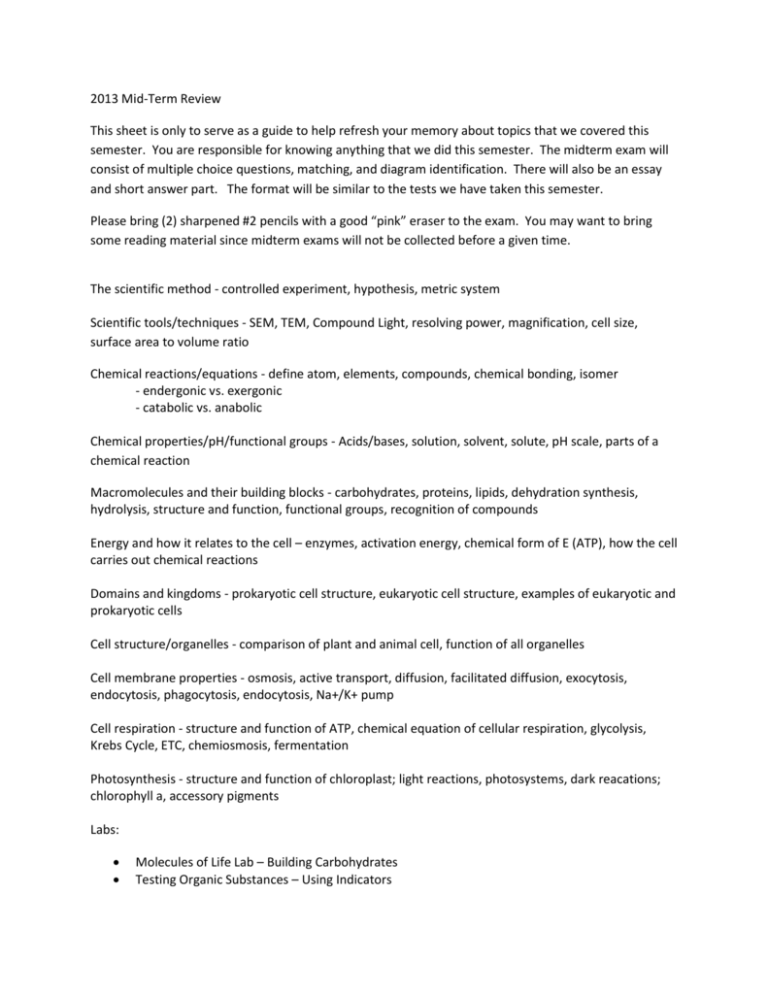
2013 Mid-Term Review This sheet is only to serve as a guide to help refresh your memory about topics that we covered this semester. You are responsible for knowing anything that we did this semester. The midterm exam will consist of multiple choice questions, matching, and diagram identification. There will also be an essay and short answer part. The format will be similar to the tests we have taken this semester. Please bring (2) sharpened #2 pencils with a good “pink” eraser to the exam. You may want to bring some reading material since midterm exams will not be collected before a given time. The scientific method - controlled experiment, hypothesis, metric system Scientific tools/techniques - SEM, TEM, Compound Light, resolving power, magnification, cell size, surface area to volume ratio Chemical reactions/equations - define atom, elements, compounds, chemical bonding, isomer - endergonic vs. exergonic - catabolic vs. anabolic Chemical properties/pH/functional groups - Acids/bases, solution, solvent, solute, pH scale, parts of a chemical reaction Macromolecules and their building blocks - carbohydrates, proteins, lipids, dehydration synthesis, hydrolysis, structure and function, functional groups, recognition of compounds Energy and how it relates to the cell – enzymes, activation energy, chemical form of E (ATP), how the cell carries out chemical reactions Domains and kingdoms - prokaryotic cell structure, eukaryotic cell structure, examples of eukaryotic and prokaryotic cells Cell structure/organelles - comparison of plant and animal cell, function of all organelles Cell membrane properties - osmosis, active transport, diffusion, facilitated diffusion, exocytosis, endocytosis, phagocytosis, endocytosis, Na+/K+ pump Cell respiration - structure and function of ATP, chemical equation of cellular respiration, glycolysis, Krebs Cycle, ETC, chemiosmosis, fermentation Photosynthesis - structure and function of chloroplast; light reactions, photosystems, dark reacations; chlorophyll a, accessory pigments Labs: Molecules of Life Lab – Building Carbohydrates Testing Organic Substances – Using Indicators Characteristic of Life (yeast) Testing pH of Household Substance Basic Unit of Life Lab – Cell structure Catalase: enzyme activity Passive Transport: Diffusion and Osmosis Skin Sensitivity Paper Chromatography
